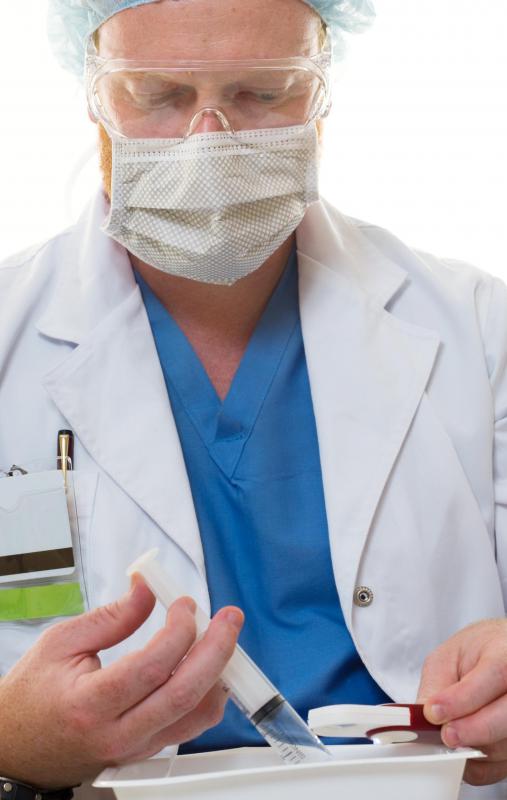At WiseGEEK, we're committed to delivering accurate, trustworthy information. Our expert-authored content is rigorously fact-checked and sourced from credible authorities. Discover how we uphold the highest standards in providing you with reliable knowledge.
What is Morphea?
Morphea is a skin disorder characterized by tough, discolored, isolated patches. The condition is usually chronic, but symptoms may come and go over the years. Besides changing the physical appearance of the skin, the disorder usually does not cause any serious health issues. People who are concerned about their appearances can use topical creams or oral medications to relieve redness and soften the skin. Light therapy sessions can also be effective at improving symptoms.
The exact causes of morphea are not well understood, but it appears to be related to a more devastating connective tissue disorder called scleroderma. Skin tissue hardens due to excess production and buildup of collagen. In the case of generalized scleroderma, collagen buildup can not only disfigure the skin but also damage joint tissue and the linings around internal organs. Most instances of morphea, however, are isolated to the outermost layers of skin.

Several risk factors and potential causes are thought to be associated with the development of morphea. Radiation exposure in industry or hospital settings appears to be a leading cause. Certain types of serious viral infections, including measles and hepatitis B, are precursors to morphea in some patients. Vaccinations for such infections can also cause skin problems, especially in very young children and people with weakened immune systems. In addition, it is suspected that genetics plays a significant role in predisposing a person to scleroderma and morphea.

Tough patches of skin most commonly develop on the abdomen, chest, or back, but it is possible to develop symptoms on another body part. The skin feels hard and dry to the touch, and a patch is usually dark red or purple with a lighter center. Once a patch develops, it usually persists for several years before going away on its own. Many people have recurring morphea in the same spots on their bodies.

A dermatologist can diagnose the condition by carefully evaluating physical symptoms and collecting a small tissue sample from a patch for laboratory analysis. Biopsy results can confirm the presence of excess collagen proteins in the middle and outer layers of skin. If the doctor suspects that deep skin tissue is involved, he or she can order ultrasounds or magnetic resonance imaging tests.

Treatment for mild cases of morphea is usually discouraged, as it is likely that symptoms will eventually resolve without medical care. A dermatologist may decide to prescribe a topical anti-inflammatory ointment or oral corticosteroid to promote faster healing. Some doctors perform photodynamic therapy, a clinical procedure in which high-intensity ultraviolet light is used to repair damaged skin cells. Surgery is only necessary if a patch of affected skin lies along a joint and makes movements difficult.
AS FEATURED ON:
AS FEATURED ON:
















Discuss this Article
Post your comments